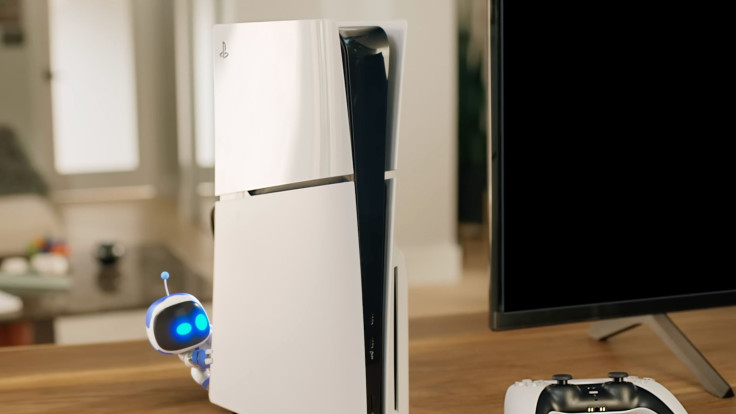PlayStation 6 Possible Release Window, Specs, Features and Everything We Know So Far
PlayStation 6 specs teased: Radiance Cores, AI upgrades, and a potential 2028 release date.

The PlayStation 5 is only halfway through its lifecycle, but the race for the next generation of console supremacy has officially begun. Sony, alongside its long-time collaborator AMD, has just offered its most tantalising glimpse yet into the technology that will power its future console, widely expected to be the PlayStation 6.
From a massive leap in graphics performance to a complete overhaul of how games use Artificial Intelligence, the details dropped by PS5 Lead Architect Mark Cerny and AMD senior VP Jack Huynh confirm that the PS6 will be a generational leap designed for stunning realism.
In a collaborative video titled 'From Project Amethyst to the Future of Play: AMD and Sony Interactive Entertainment's Shared Vision,' the duo confirmed they have been working on a secret joint venture, codenamed Project Amethyst.
While the executives didn't explicitly name the PS6, Cerny's final, brief comment has sparked a fever pitch of speculation, pointing towards a release date much sooner than some might expect.
When Can We Expect The PlayStation 6 Release Date?
The most critical piece of information came directly from Mark Cerny, the architect who defined the PS4 and PS5. Towards the end of the nine-minute video, Cerny offered a seemingly innocuous line that has since been dissected by the entire gaming industry. Cerny stated that these promising technologies, which currently only exist in simulation, are something he's excited about bringing to a 'future console in a few years' time.'
Most analysts and outlets are interpreting that Cerny's 'future console' coming in 'a few years' time' suggests Sony plans to release the PS6 late 2028. This timeframe aligns with the typical console lifecycle, and considering Sony started development of the PS5 almost immediately after the PS4 launch in 2013, it is entirely plausible the PS6 has been in the works for five years or even longer.
This expected date supports earlier comments made by Sony Interactive Entertainment CEO and president Hideaki Nishino. While Nishino did not confirm a next-gen console was in development, he affirmed that the 'future of the platform is top of mind' and that they are 'committed to exploring a new and enhanced way for players to engage with our content and our services.'
Next-Gen PlayStation 6 Specs: Radiance Cores and Neural Arrays
The collaborative video spent the majority of its run time detailing two specific, massive hardware upgrades that will define the PS6's specs:
1. Radiance Cores for PlayStation 6
This represents a completely new, dedicated hardware block on the GPU designed to significantly speed up ray-traced rendering. Radiance Cores will reportedly make real-time path-tracing possible.
The technology works by taking full control of the ray transversal part of the ray tracing pipeline, processing it independently of the shader cores to speed up rendering time. This would likely allow the PS6 to play path-traced games with performance equivalent to today's high-end PC graphics cards.
2. Neural Arrays for PlayStation 6
This new feature represents an optimization focused on the AI-accelerators housed within each compute unit (CU) of AMD's modern RDNA architectures. Neural Arrays will network all of the CUs together, creating an 'Infinity Fabric' style interconnect.
This feature will allow the GPU to process a 'large chunk of the screen in one go'. While it connects the entirety of each compute unit, the feature appears to be exclusively targeted toward boosting AI-rendering performance.
Universal Compression and Other Likely PlayStation 6 Features
The partnership between Sony and AMD also extends to a significant memory upgrade: Universal Compression. The companies are moving away from the PS5 series' outgoing compression, Delta Color Compression, which can allegedly only compress certain data elements like textures.
Universal Compression allows all data types to be compressed 'whenever possible.' Jack Huynh confirmed that this memory technology is destined for future AMD SoCs and GPUs, suggesting it is a locked-in feature for the PS6.
It is also virtually confirmed that the PS6 will take full advantage of FSR Redstone and its suite of machine learning features. Furthermore, given that Mark Cerny has played a role in developing the upcoming RDNA 5 architecture, it is almost inevitable that the Radiance Cores and Neural Arrays will debut in AMD's next-generation gaming GPU architecture, which will, in turn, power the new console.
Finally, the possibility of a PlayStation 6 handheld counterpart should not be dismissed. Handheld rumours have ramped up, especially following the release of the PlayStation Portal, and even Microsoft is exploring Xbox-branded handhelds, confirming that change is clearly coming to the console ecosystem.
Stay tuned to IBTimes UK for the latest news and updates on the upcoming PlayStation 6!
© Copyright IBTimes 2025. All rights reserved.





















